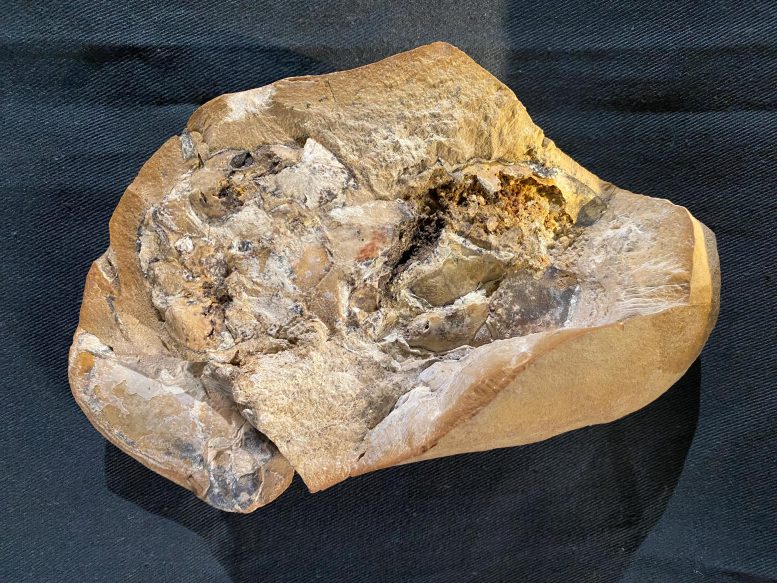
The Gogo fish fossil where the 380-million-year-old, 3D preserved heart was discovered by researchers. Pictured at the WA Museum. Credit: Yasmine Phillips, Curtin University
Paleontologists have discovered a 380-million-year-old heart – the oldest ever found – alongside a separate fossilized liver, stomach, and intestine in an ancient jawed fish, shedding new light on the evolution of our own bodies.
Vital new evolutionary clues are provided by the research, which found that the position of the organs in the body of arthrodires is similar to modern shark anatomy. Arthrodires are an extinct class of armored fishes that flourished through the Devonian period from 419.2 million years ago to 358.9 million years ago. The study was published on September 15, 2022, in the journal Science.
It was a remarkable discovery given that soft tissues of ancient species were rarely preserved and it was even rarer to find 3D preservation, said lead researcher John Curtin Distinguished Professor Kate Trinajstic, from Curtin’s School of Molecular and Life Sciences and the Western Australian Museum.
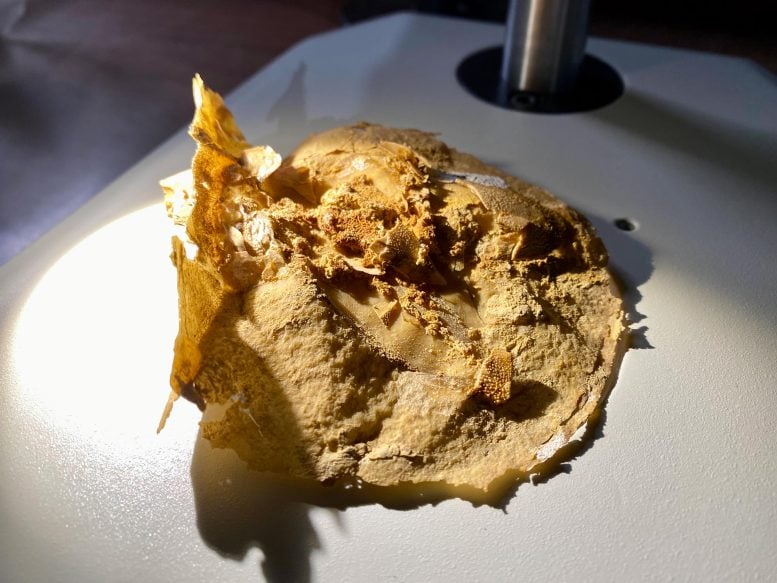
The preserved stomach of a Gogo fish fossil under the microscope. Pictured at the WA Museum. Credit: Yasmine Phillips, Curtin University
“As a paleontologist who has studied fossils for more than 20 years, I was truly amazed to find a 3D and beautifully preserved heart in a 380-million-year-old ancestor,” Professor Trinajstic said.
“Evolution is often thought of as a series of small steps, but these ancient fossils suggest there was a larger leap between jawless and jawed vertebrates. These fish literally have their hearts in their mouths and under their gills – just like sharks today.”
This research presents – for the very first time – the 3D model of a complex s-shaped heart in an arthrodire that is made up of two chambers with the smaller chamber sitting on top.
Heart position animation created by Alice Clement.
Professor Trinajstic said these features were advanced in such early vertebrates. This offers a unique window into how the head and neck region began to change to accommodate jaws, which was a critical stage in the evolution of our own bodies.
“For the first time, we can see all the organs together in a primitive jawed fish, and we were especially surprised to learn that they were not so different from us,” Professor Trinajstic said.
“However, there was one critical difference – the liver was large and enabled the fish to remain buoyant, just like sharks today. Some of today’s bony fish such as lungfish and bichirs have lungs that evolved from swim bladders but it was significant that we found no evidence of lungs in any of the extinct armored fishes we examined, which suggests that they evolved independently in the bony fishes at a later date.”
The fossils were collected in the Gogo Formation, located in the Kimberley region of Western Australia. It was originally a large reef.
Researchers used neutron beams and synchrotron x-rays to scan the specimens, still embedded in the limestone concretions, and constructed three-dimensional images of the soft tissues inside them based on the different densities of minerals deposited by the bacteria and the surrounding rock matrix. To accomplish this they enlisted the help of scientists at the Australian Nuclear Science and Technology Organization in Sydney and the European Synchrotron Radiation Facility in France.
In addition to previous finds of muscles and embryos, this new discovery of mineralized organs makes the Gogo arthrodires the most fully understood of all jawed stem vertebrates and clarifies an evolutionary transition on the line to living jawed vertebrates, which includes the mammals and humans.
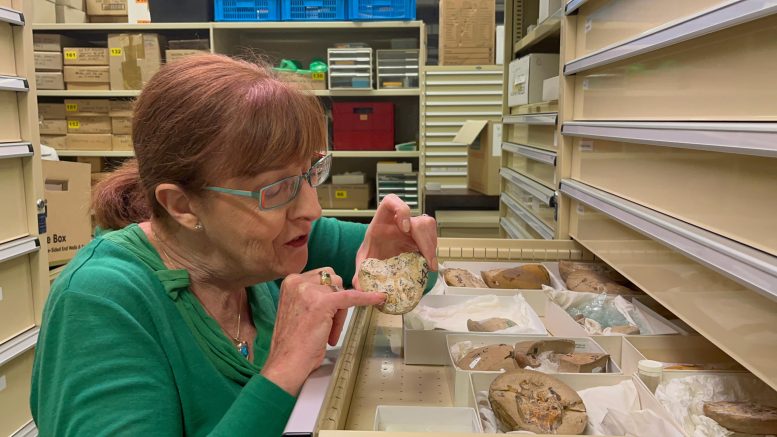
Curtin University Professor Kate Trinajstic inspects the ancient fossils at the WA Museum. Credit: Adelinah Razali, Curtin University
“These new discoveries of soft organs in these ancient fishes are truly the stuff of paleontologists’ dreams, for without doubt, these fossils are the best preserved in the world for this age,” said co-author Professor John Long, from Flinders University. “They show the value of the Gogo fossils for understanding the big steps in our distant evolution. Gogo has given us world firsts, from the origins of sex to the oldest vertebrate heart, and is now one of the most significant fossil sites in the world. It’s time the site was seriously considered for world heritage status.”
“What’s really exceptional about the Gogo fishes is that their soft tissues are preserved in three dimensions,” said co-author Professor Per Ahlberg, from Uppsala University. “ Most cases of soft-tissue preservation are found in flattened fossils, where the soft anatomy is little more than a stain on the rock. We are also very fortunate in that modern scanning techniques allow us to study these fragile soft tissues without destroying them. A couple of decades ago, the project would have been impossible.”
Reference: “Exceptional preservation of organs in Devonian placoderms from the Gogo lagerstätte” by Kate Trinajstic, John A. Long, Sophie Sanchez, Catherine A. Boisvert, Daniel Snitting, Paul Tafforeau, Vincent Dupret, Alice M. Clement, Peter D. Currie, Brett Roelofs, Joseph J. Bevitt, Michael S. Y. Lee and Per E. Ahlberg, 15 September 2022, Science.
DOI: 10.1126/science.abf3289
The Curtin-led research was a collaboration with Flinders University, the Western Australian Museum, the European Synchrotron Radiation Facility in France, the Australian Centre for Neutron Scattering at Australia’s Nuclear Science and Technology Organisation, Uppsala University, Monash University’s Australian Regenerative Medicine Institute and the South Australian Museum.

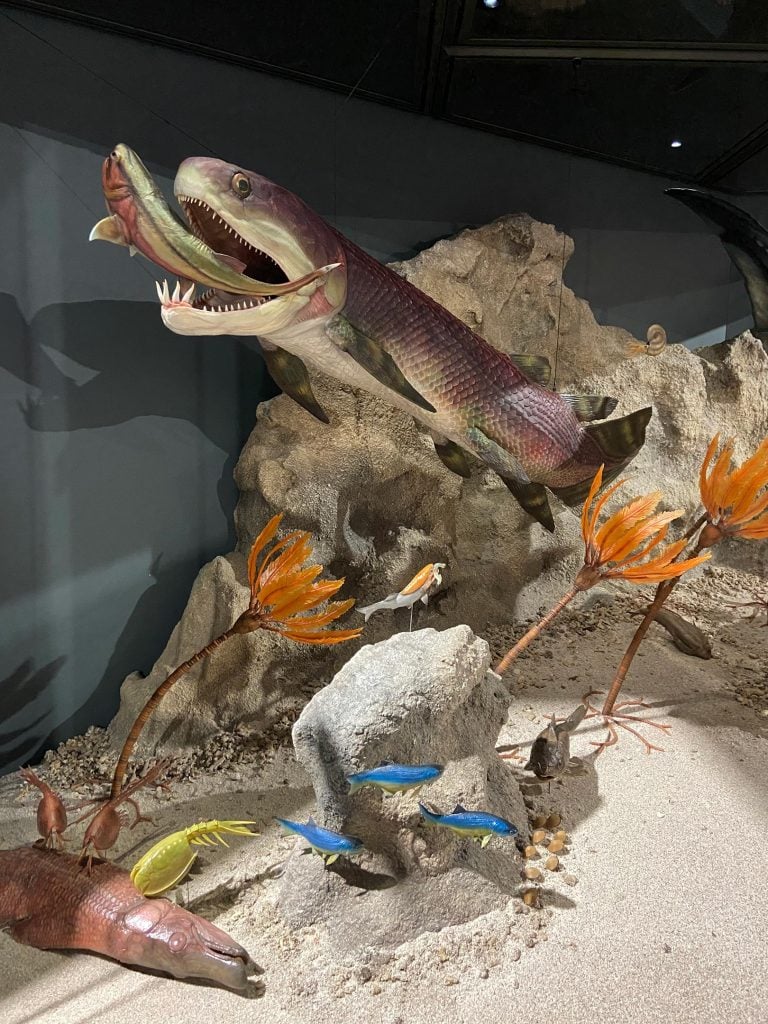
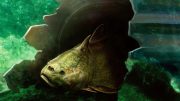
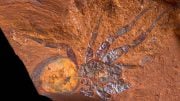
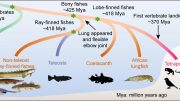
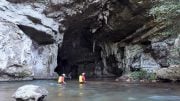
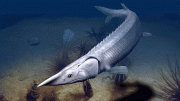
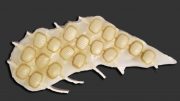
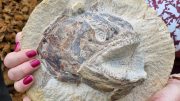
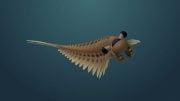
Looks like a piece of homemade wheat bread.
Wow! This clarifies a lot about fish and tetrapod evolution. Speaking of the latter, I expected to see my alma mater’s Per Ahlberg involved in this, and I was not disappointed.
As for the Western Australian Gogo lagerstätte, a map search places the suggested World Heritage site among such illustrious names as Paddy’s Valley, Wagon Pass and Long’s Well. I guess it’s six of one, half a dozen of the other.
“Fossils from the Gogo Formation show extensive soft tissue preservation through phosphatization, recording anatomical details not normally obtained from fossil sites.
The Late Devonian reef complexes of the Canning Basin in Western Australia (Fig. 1) are of immense significance in terms of their contribution to the study of ancient reef systems and their faunal compositions (Aitchison 1993; Wood 1999). The Gogo Formation Lagerstätte preserves the reef framework in addition to a diverse invertebrate and vertebrate fossil fauna that includes high-fidelity preservation of organs and soft tissues in three dimensions, as well as biomolecules. This exceptional preservation has allowed detailed anatomical study of both invertebrate and vertebrate taxa.” [“The Gogo Formation Lagerstätte: a view of Australia’s first great barrier reef”, Kate Trinajstic, Derek E. G. Briggs, and John A. Long. JGS, 2021.]
Great, we found an old shark fish that is basically the same as today. It does shed light on evolution mostly destroys the theory, but whatever
This confirms the genious and creativity of nature
I have several fossils that look comparatively close in similarity. Dozens of them actually. If you guys ever wanna shoot Lasers and whatever at my rocks, let’s do it